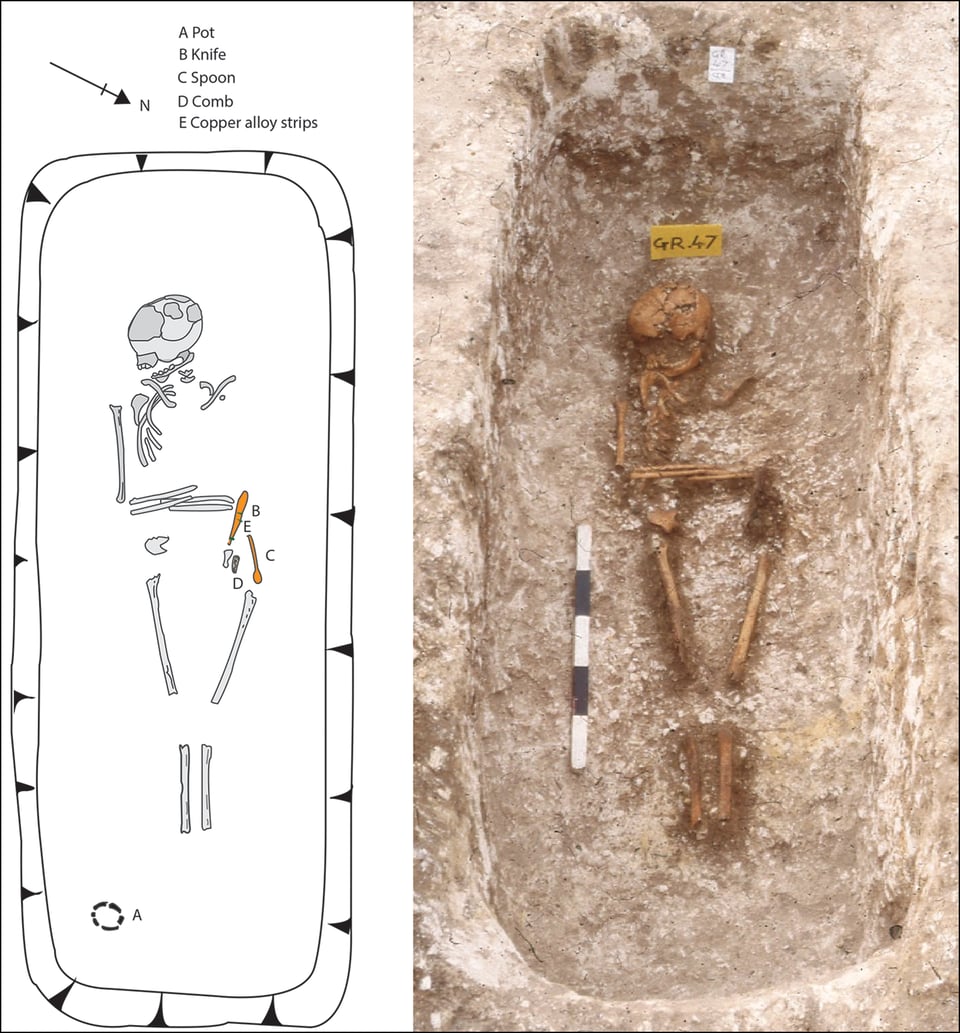Africans in Early Medieval England
A New Archeological Discovery Provides More Evidence for a Permeable Medieval Europe

Modern Medieval
by David M. Perry and Matthew Gabriele
One of the major points that we were trying to make in our book The Bright Ages, was that medieval Europe should be understood as “permeable” during the Middle Ages. Even in the farthest northern reaches, even during the height of the “Fall of Rome,” people moved. We wrote:
Early medieval Britain was built by its connections to elsewhere… Sixth-and seventh-century coins and gems have regularly been found in contemporary graves across Britain, originating in either Byzantium or even the Sassanian Empire in Persia. Shoulder clasps found in the famous Sutton Hoo ship burial in Suffolk, England contained garnets from, most likely, India or Sri Lanka. And people moved with these goods. Scientists can measure the oxygen isotopes in dental enamel to determine where in the world long-dead people were born. From the Bronze Age through to the medieval period, we’re finding people buried in British graves who were born in Asia and Africa. That number peaked, unsurprisingly, during the Roman period, but never falls to zero throughout the Middle Ages
And now a new discovery - archeologists, working with scientists and historians - have offered more evidence to prove this point.
A new article published in the academic journal Antiquity has shown, definitively, that at least a few people who lived in the 7th century CE in the south of England had West African ancestry. The excavation sites (cemeteries) themselves have been known since the 1980s, and this has long been strongly suspected, but DNA samples now prove their transcontinental connections beyond a doubt.

What’s perhaps even more revealing is how these individuals were buried - just like everyone else. An article in Science explains:
The Updown girl’s sub-Saharan African ancestry didn’t seem to set her apart from others buried in the cemetery, which was associated with the wealthy Anglo-Saxon elite. DNA testing identified her maternal aunts and grandmother buried nearby, all with Northern European ancestry that was typical for the Anglo-Saxon era. The tokens in the girl’s grave—a knife, a bone comb, a spoon, and a decorated pot—are also typical for her apparent social class…
The evidence from Worth Matravers told a similar story. The young man was buried in a simple double grave next to a genetically unrelated adult man and a boat anchor fashioned from local limestone. “It seems unlikely nobody knew about their ancestry, but these individuals weren’t treated differently in death than anyone else,” [Dr. Helena] Hamerow says.

Most people don’t think of medieval northern Europe as intimately connected with other places. The myth of the “Dark Ages” sadly endures. But new evidence like this will hopefully begin putting that myth to bed.
The European Middle Ages weren’t a great time and we should never shy away from its horrors, nor from the dangerous far right nostalgia for a cartoon version of the period. Instead, we ought think of it as a very human time, one in which people have always come from elsewhere, but also (in this case) were welcomed into community just like everyone else.
-
Great reporting, as always - thx!
Add a comment: